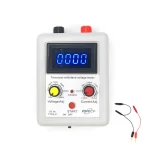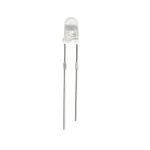 Introduction:
Introduction:
The blower motor resistor is a crucial component in a vehicle’s heating, ventilation, and air conditioning (HVAC) system. It regulates the speed of the blower motor, which controls the airflow into the cabin. When the blower motor resistor malfunctions, it can lead to issues such as a non-functioning or uncontrollable blower motor. In this comprehensive guide, we will explore the blower motor resistor’s function, signs of a faulty resistor, and its location in different types of vehicles.
Understanding the Blower Motor Resistor
Function of the Blower Motor Resistor:
The blower motor resistor regulates the speed of the blower motor by controlling the electrical current flowing through it.
It achieves this by varying the resistance in the circuit, thereby controlling the voltage supplied to the blower motor.
Importance of the Blower Motor Resistor:
The blower motor resistor ensures that the vehicle’s HVAC system provides the desired airflow and temperature control inside the cabin.
By regulating the blower motor speed, it allows occupants to adjust the fan speed according to comfort requirements.
 Signs of a Faulty Blower Motor Resistor
Signs of a Faulty Blower Motor Resistor
Signs of a Faulty Blower Motor Resistor
Non-Functioning Blower Motor:
When the blower motor resistor fails, the blower motor may stop functioning altogether, resulting in no airflow through the vents.
This can cause discomfort and hinder defrosting, ventilation, and heating capabilities.
Inconsistent Fan Speeds:
A faulty blower motor resistor can lead to irregular or uncontrollable fan speeds.
The blower motor may run at high speeds even when the control is set to low or vice versa, affecting temperature regulation and overall comfort.
Overheating Resistor:
In some cases, a faulty blower motor resistor can overheat due to excessive electrical current passing through it.
Overheating can cause damage to the resistor and surrounding components.
Locating the Blower Motor Resistor
Vehicle-Specific Locations:
The blower motor resistor’s location can vary depending on the make, model, and year of the vehicle.
Common locations include the firewall, behind the glove compartment, under the dashboard, or near the blower motor itself.
Accessing the Resistor:
To access the blower motor resistor, it may be necessary to remove specific components such as panels, covers, or dash components.
Referencing the vehicle’s service manual or consulting a trusted automotive source can provide specific instructions for locating and accessing the resistor.
 Locating the Blower Motor Resistor in Different Vehicle Types
Locating the Blower Motor Resistor in Different Vehicle Types
Passenger Cars and Sedans:
In many passenger cars and sedans, the blower motor resistor is typically located under the dashboard on the passenger side, near the blower motor housing.
Accessing the resistor often requires removing the glove compartment or dashboard components.
SUVs and Trucks:
For SUVs and trucks, the blower motor resistor is commonly located behind the glove compartment or under the dashboard.
Removal of specific components may be necessary to access the resistor.
Vans and Minivans:
In vans and minivans, the blower motor resistor’s location can vary but is often found under the dashboard on the passenger side or near the blower motor housing.
Removing dash components or accessing the resistor from the engine compartment may be required.
Seeking Professional Assistance
Consulting a Mechanic:
If you are uncertain about the location or diagnosis of a faulty blower motor resistor, it is advisable to consult a qualified mechanic.
A professional can pinpoint the exact location of the resistor and provide expert guidance for replacement or repair.
DIY Replacement Considerations:
DIY replacement of the blower motor resistor may be feasible for those with automotive knowledge and the necessary tools.
It is essential to follow proper safety precautions and refer to the vehicle’s service manual or trusted resources for accurate instructions.
 Here is how the blower motor resistor works and its operating principle:
Here is how the blower motor resistor works and its operating principle:
The blower motor resistor is an electrical component that is responsible for controlling the speed of the blower motor in a vehicle’s heating, ventilation, and air conditioning (HVAC) system. Here is how the blower motor resistor works and its operating principle:
Speed Control:
The blower motor resistor allows for the adjustment of the blower motor speed by controlling the amount of electrical current supplied to the motor. It achieves this by providing different resistance values based on the selected speed setting.
Variable Resistance:
The resistor consists of multiple resistive coils or a solid-state electronic circuit. Each coil or element within the resistor has a different resistance value. These values are predetermined and correspond to different fan speed settings (e.g., low, medium, high).
Voltage Drop:
When the blower motor speed switch is set to a specific speed, a corresponding connection is made to the appropriate resistive coil or electronic circuit within the blower motor resistor. This connection creates a voltage drop across the resistor.
Current Regulation:
The voltage drop across the resistor causes a reduction in the electrical current flowing to the blower motor. The resistance of the resistor restricts or regulates the current flow, resulting in a lower motor speed.
Heat Dissipation:
During operation, the resistor generates heat due to the current passing through it. To prevent overheating, the resistor is typically located in an area with good airflow or has a heat sink attached to dissipate the generated heat.
Fan Speed Selection:
By adjusting the blower motor speed switch, different connections are made to the appropriate resistive elements, resulting in varying resistance values and thus different current flow to the blower motor. This, in turn, controls the speed at which the blower motor operates.
The blower motor resistor’s operating principle is to provide variable resistance in the circuit to regulate the current flow and ultimately control the speed of the blower motor. By offering different resistance values corresponding to different speed settings, the resistor ensures that the blower motor operates at the desired speed, providing appropriate airflow and ventilation inside the vehicle’s cabin.
 Conclusion:
Conclusion:
The blower motor resistor plays a critical role in controlling the speed of the blower motor and ensuring proper airflow and temperature control in a vehicle’s HVAC system. Recognizing the signs of a faulty resistor and understanding its location can help diagnose and resolve HVAC-related issues. While vehicle-specific locations may vary, accessing and replacing the blower motor resistor can be accomplished with the right resources, knowledge, and sometimes professional assistance. Maintaining a functional blower motor resistor ensures a comfortable and well-regulated cabin climate, enhancing the overall driving experience.










